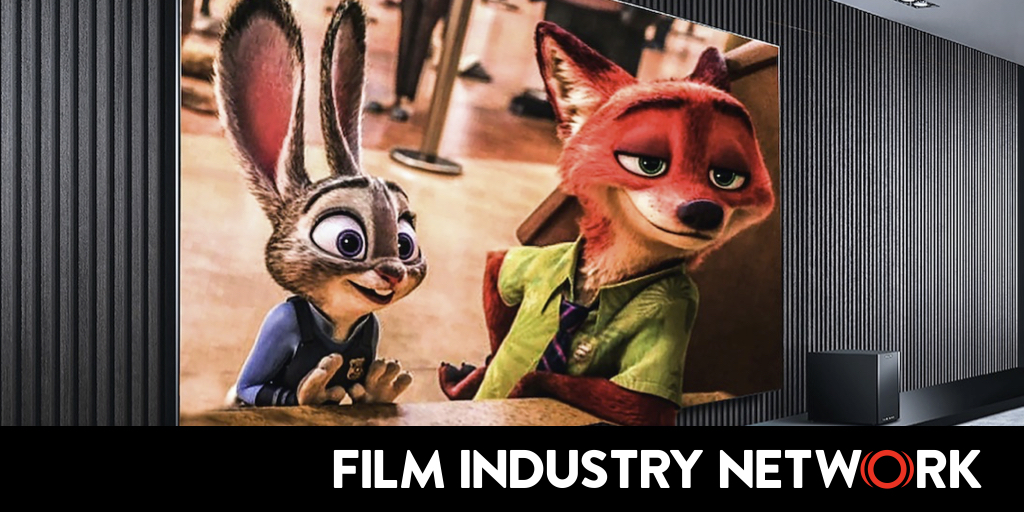
© Chauhan Moniz
Animation is by no means a new art form. The history of animation stretches before the invention of motion pictures, first achieving commercial success in 1832. It was made by showing drawings of a character’s steps moving in rapid succession, which gives the illusion of continuous movement. Devices have been used to have this effect, although anyone can create an animation of this shape using nothing more than a notepad and pencil.
Things have evolved since then, but the principles have remained essentially the same. However, animation has several advantages over live cinema, which some animators take full advantage of. It’s even been suggested that we may be entering a new renaissance in animation.
The benefits of animation
Animation is a valuable tool for storytelling and illustrations because it’s so flexible. When animating, stories can be told in a much more unique way than would be possible with live action. Animators aren’t subject to the same laws of physics or logic that a filmmaker would be. Because of this, animation is often better suited for telling certain stories.
Animation is not necessarily cheaper to produce than live action, as there is still a lot of design and labor involved in an animated feature. However, it shines when used in shorter projects, such as commercials or explainer videos.
While a live action production requires actors, directors, set designers, equipment and a physical space to play, an animated production can be created and edited using a single computer. Yes, most animations include voice actors, but voice can be recorded quite easily.
The rebirth of animation

When most people refer to the American Animation Renaissance Age, they are usually referring to the period that began in the late 1980s and ended in the 1990s. This period, sometimes also called the Disney Renaissance, saw a huge increase in critically acclaimed animated films.
These films were hugely popular and still carry weight as classics of popular culture today. Who has never heard of Ariel, Belle, Aladdin, Simba or Mulan? These films all had the same 2D Disney art style and featured musical numbers throughout. Towards the end of this period, however, populated animated films changed to a 3D art style, which is still popular today.
These great animation giants are still producing successful and, in some cases, very high quality animated productions today. These productions are avant-garde and generally well thought out. However, that’s not necessarily where the most exciting progress in animation takes place.
International Entertainment
For starters, while Western production companies are still producing many of the most commercially successful animated films, international animation is creeping into the public eye. It’s not an entirely new thing. Studio Ghibli has enjoyed international acclaim since its inception in 1985.
However, for a long time, anime and other international animations were considered niche genres in the United States, rather than mainstream productions. That wasn’t necessarily a bad thing, as it meant that these animated films and series weren’t bound by the same unwritten expectations and rules as more well-known productions. This allowed for a certain freedom that allowed filmmakers to experiment with the medium of animation.
Although international acclaim and a mainstream audience have probably curtailed that creative freedom, these productions are still capable of creating more unique things. You can find some of the most popular animated movies on Featured Animation and compare them to popular American animation.
Independent Studios
As it is increasingly clear that the public is ready to accept something different, small independent studios are taking advantage. This is arguably where the true renaissance of modern animation is taking place.
These small studios are not tied to the same traditions or limitations as the big productions. They can explore different animation styles and different stories, resulting in truly unique and beautiful movies. Animation doesn’t have to be “something for kids”, but can also be an ideal medium for adult storytelling with adult characters.
In addition to new and interesting stories, smaller studios are using animation to raise concerns and spread messages. For example, last year the dWeb released a movie called “What is Our Future?” to portray a potential future resulting from decentralization. This film, and others like it, share new and interesting thoughts, adding to the conversation about the future.
One of the ways indie studios shine is that they aren’t afraid to use unusual and beautiful art styles. Most major studios have a recognizable “house style”, which means you can immediately identify a character or style.
For example, Disney characters, whether rendered in classic 2D or modern 3D, tend to have semi-realistic proportions, detailed hair and clothing, and exaggerated features. They evoke realism, but have a distinctly cartoonish style. Disney has recently tried to diversify some of its character design (compare the female characters in Frozen with those in Encanto), but the style is still clear.
But independent studios don’t have a “house style” to restrict them. They can experience the medium in interesting ways. For example, an animated biopic titled “Loving Vincent”, which is about Vincent Van Gogh, is the first fully painted animated production, and hopefully not the last.
Increased experimentation
The popularity of these new artistic styles and ideas did not go unnoticed by major studios. Some more stylistic and unusual methods have crept into mainstream animation media, with stunning results. The combination of funding and imagination tends to work very well.
A recent example is the movie “Spider-man: Into the Spiderverse”, which featured a fantasy style reminiscent of comic books. Rather than using traditional CGI, it was animated using new rendering styles combined with hand-drawn elements. The result is an explosive and unique film. Granted, the plot and characters don’t cross any boundaries, but it’s a good sign for the future of animation.
Animation has the potential to tell stories in ways that live action cannot fully capture. If even bigger and more established studios are willing to experiment with this medium, then animation could make even more artistic and technological advancements.